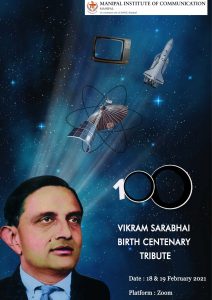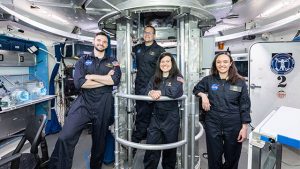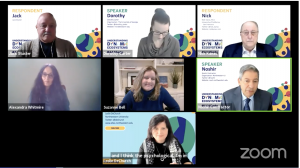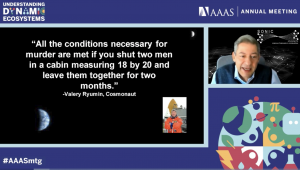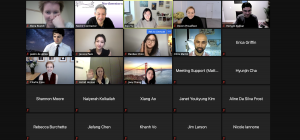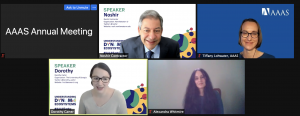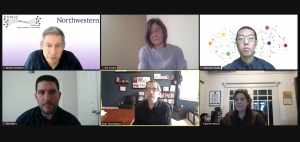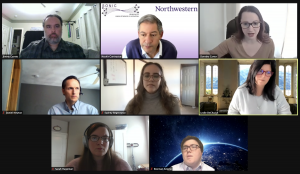Excited to share that we have 3 abstracts accepted at #Networks2021! Congratulations to authors Kyosuke Tanaka, Xiangheng Chen, Aida Baimenova, Neelam Modi, Alina Lungeanu, Leslie DeChurch, and Noshir Contractor 👏
For more info about Networks 2021, click here.
For more info about our abstracts, please see below:
Knowing is not Enough: How Network Awareness and Acuity are Associated
Authors: Kyosuke Tanaka, Leslie DeChurch, and Noshir Contractor
Abstract:
Network research has shown that accurate awareness of a social network brings network advantages (e.g., informal power, faster promotion, and higher performance) to members in groups and organizations. This is because it assumes that those who accurately perceive ties among others within their social network (i.e., high network awareness) can also navigate the social world with more precision, which we call network acuity. However, it is unclear whether this assumption holds true or it is the other way around—network acuity impacts network awareness.
Here, we tested this assumption using cross-lag panel modeling on longitudinal network data from a laboratory experiment where 405 participants (57% female) who were in 23 pre-existing networks engaged in five rounds of a three-minute network routing task. The network routing task was developed based on the notion of Milgram’s small-world experiment where participants within a group select a fixed number of contacts and route messages via these contacts to get them to the target person. We measured network acuity as an individual-level metric of the proportion of times the individual used the shortest path contact toward the target person per round. Each group was randomly assigned to either a workload available condition or non-available condition. In the workload available condition, participants were able to access their contacts’ workload (the number of messages waiting in their inbox to be routed). We hypothesize that the availability of this information impacts how they perceive and use their contacts. We also asked participants to report their perceptions of whom others chose as their contacts to route messages in each round. We measured network awareness based on their accuracy of the actual routing network. Additionally, we collected self-report surveys about their pre-existing social network ties within their group as well as their individual characteristics (e.g., the Big Five personality traits, self-monitoring, and cognitive ability).
Our results show that in contrast to the aforementioned intuition, high network acuity positively predicts network awareness instead of the other way around. This suggests that effective navigation of their social networks by individuals shapes their accurate awareness of the network. We also find that women and those who are popular in the pre-existing social network tend to be higher on both network awareness and acuity. In other words, both dispositional (gender) and positional (popular in the network) characteristics play a vital role in accurate perceptions and navigation of the network. Further, high conscientiousness and cognitive ability are associated with high network awareness, while high self-monitoring is related to high network acuity. Taken together, our findings suggest that knowing the network structure accurately is not enough for people to effectively navigate the network as needed, especially under pressure.
Network Routing Task Performance among Space Crew with Mission Support in Space Multiteam Systems
Authors: Kyosuke Tanaka, Xiangheng Chen, Aida Baimenova, Leslie DeChurch, and Noshir Contractor
Abstract:
In long-distance space missions, communication delays (CD) between space crews and ground mission control (MC) become longer as crews get farther away from earth, thereby setting a higher demand for effective information sharing under resource constraints. Due to “bandwidth constraints,” space crews and mission support need to leverage their indirect contacts (i.e., contacts’ contacts) to route information optimally. The lack of awareness of one’s network contacts could result in failure of information sharing, contributing to the risk of accidents during space missions. However, what factors play a role in predicting such awareness has not yet been studied.
Here, we introduce the concept of network acuity to characterize the individual’s ability to effectively use the network awareness as needed. It is measured by the extent to which an individual can identify the direct contact who is on the shortest path to their indirect, destination contact. We collected data from NASA’s Human Exploration Research Analog (HERA), Campaigns 3, 4, and 5, and Russia’s Nezemnyy Eksperimental’nyy Kompleks (NEK) SIRIUS-18/19, using Project RED Relay—a web-based simulation portal that enables space crews and MC to engage in network routing as part of a multiteam system (MTS) task. Each participant was instructed to choose only 2 direct contacts among 11 others (simulating bandwidth constraints) and aim for routing information to destinations with which they were only indirectly connected via the fewest steps. In total, we analyzed 97, 12-member network sessions (81, 4-crew-8-MC sessions for HERA and 16, 6-crew-6-MC sessions for NEK), each assigned with different CD conditions (180-second, 60-second, or zero for HERA and 30-second or zero for NEK).
Our results show that factors, such as CD and the Big Five personality traits, can impact an individual’s network acuity. We found that the network acuity of space crews is significantly higher than that of MC in both NEK and HERA Campaigns 4 and 5, but not Campaign 3. Further, we found a negative relationship between the network acuity and CD in MC members, but such a relationship is not significant among space crews. In addition, our study of the HERA and NEK data shows that space crews’ network acuity was negatively associated with conscientiousness in both Campaigns 3 and 4, whereas it was positively associated with traits of openness to experience, agreeableness, and neuroticism in Campaign 4, but not in Campaign 3. Overall, our results demonstrate the need to consider key personality characteristics in selecting space crews to maximize network acuity. This will be key in mitigating failures in information sharing within multiteam systems (MTS) and the associated risks. We anticipate our study to be a starting point for more research into determining the optimal level of the Big Five personality traits in terms of information sharing, as well as identifying more factors impacting network acuity within MTS under different CD conditions.
Hard to recruit but worth trying: Searching for cross-boundary collaborations in science
Authors: Neelam Modi, Alina Lungeanu, Leslie DeChurch, and Noshir Contractor
Abstract:
“We hail individual geniuses, but success in science comes through collaboration.” (Farrar, 2017)
Research that looks back on collaboration that produced the greatest scientific breakthroughs highlights boundary-crossing collaboration. By boundaries, we mean disciplines, organizations, cultures, professions, and demographics. Although collaboration has long been important in science, the rapid specialization of knowledge across domains is making collaboration essential. This is especially true in biomedical research.
The National Institutes of Health (NIH) makes substantial investments to encourage cross-boundary team science in biomedicine. This research project focuses on an exemplar support mechanism, the NIH’s Clinical and Translational Science Award (CTSA) Program. With a $500 million annual budget, the CTSA Program is designed to facilitate collaborations between the “(laboratory) bench and the (clinical) bedside” as well as streamline multi-site studies. In particular, the CTSA’s Pilot Grant program, which provides seed funding to hundreds of teams each year, seeks to incentivize new cross-boundary teams that bring together basic scientists and clinical researchers, junior faculty and experienced mentors, and researchers from different departments or institutions.
While cross-boundary collaboration in team science has demonstrated benefits, research also suggests they are unlikely to form, and when they do, are prone to coordination costs. Our study seeks to advance the Science of Science by understanding the assembly of cross-boundary teams who conduct clinical and translational science. We leverage both social network theories and research on groups and teams to answer two research questions: (RQ1) Do funding investments shift team composition in favor of cross-boundary collaboration? and (RQ2)
Which cross-boundary combinations are the most effective?
To answer these research questions, we use archival data about researchers submitting proposals to one Midwestern University CTSA’s Pilot Grant Program between the years of 2014 and 2019. We examine 432 proposal submissions in total, of which 323 were team proposals (having 2 or more researchers). This results in 288 researchers listed as Co-PIs on team proposals, of whom 243 did not have their proposals awarded, 7 had both awarded and un-awarded proposals, and 38 had awarded proposals. We extract demographics, education and employment information, and organization and department affiliation from the university’s internal database. Additionally, we use publication data from the Web of Science database to construct bibliometric information (including publications, co-authorship and co-citation relations) for the entire population of researchers who submitted grant proposals.
We use Exponential Random Graph Models to assess factors influencing the assembly and success of grant proposal teams. Preliminary results show that in general cross-boundary collaboration are not likely among teams submitting proposals, but cross-disciplinary collaborations are more likely among the team proposals that were successful. Thus, even though cross-boundary collaboration is widely promoted, researchers are more likely to consort within their own demographics. However, in order to be successful, scientists would benefit by collaborating with different disciplines.

